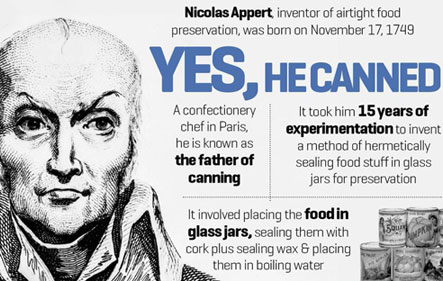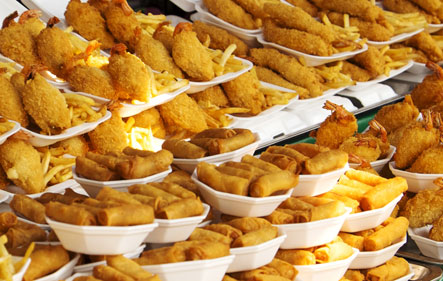Burgers, barbeque and beverages … they are the staples of summertime diets. Actually, these delicious foods are popular year-round. In fact, did you know that hamburgers are the single most popular food in America? They’re followed by hot dogs at Number 2, and French Fries at Number 3. And what about pizza, you ask? It comes in at Number 5. It lost the Number 4 spot to Oreo cookies. Yep.
Found NOWHERE on that list … apples, grapes, broccoli, cucumbers, or anything that grows from the ground or a tree, for that matter. Sadly, there are no natural food items to be found anywhere on the list of the top ten most popular foods in America. None.

Bottom line … we eat too much processed foods, too much meat and not enough fruits and vegetables. The typical American diet has too much sugar and salt. How did we get here? It’s been a journey.
What has led to the proliferation of processed foods, a habit of consumption often referred to as the “Western diet”? Two factors – convenience and cost – made processed foods the “go to” solution for eating. They also led to the growth of an industry that controls how we get our food.
Today’s processed food industry is an exclusive “club” consisting of ten major conglomerates, but food processing is a story that has been centuries in the making. Food preservation methods like drying, smoking and salting existed in Mesopotamia and ancient Egypt as early as 9600 BC. As history began to be recorded, languages and writing allowed for documenting food preservation techniques, with ancient societies further developing and refining the processing of raw foods. Breakthroughs in modern food processing began in the 1800s with pasteurization – killing bacterial growth using heat without affecting nutritional quality, and canning. We all recognize the name of French microbiologist Louis Pasteur, but the name Nicholas Appert may be less familiar.

Around 1810, before Pasteur revolutionized food safety, French chef Nicholas Appert began experimenting with preserving food using heat, glass bottles, cork and wax. He established the first food bottling factory in the world, La Maison Appert. His initial work led to the development of the tin can, which became a staple during World War I allowing for cheap, transportable food for soldiers.
The mid-20th Century saw the next great leap forward in processed foods with the invention of the ready-to-eat meal.

The development of packaged meals led to techniques such as spray drying, evaporation, freeze drying and the use of preservatives to extend the shelf life of foods. Artificial sweeteners and colors grew in popularity. But as people became more ecologically aware during the late 20th century, concerns about preservatives and their long-term health affects began to arise. Along with these concerns has come the recognition that the adoption of Western dietary patterns is leading to large scale biodiversity loss, pollution and drastic changes in land and water use.

But how do we reconcile the impact the food industry has on climate change with the key elements that sustain the industry – convenience and cost? I just made my grocery list for the week and at the top of that list are milk, eggs and fruit. Even if I could, I don’t see myself personally go to milk a cow, get eggs from a chicken coup, and pick fruit from trees to check off the items on this week’s list.
Recent events have begun to show the vulnerabilities in the system. The baby formula shortage reached a crisis point, forcing the government to use the War Production Act to get formula back onto grocery shelves. While this crisis has affected only a portion of the US population, another crisis is much more universal.
It’s no secret to anyone who eats (which is, well, all of us) that the cost of feeding ourselves and our families has increased significantly just over the past year alone. According to the USDA, prices for “food-at-home” (i.e. grocery and supermarket foods) increased by 10.8% over a 12-month period since April 2021. Of course, many of us eat out regularly, and that cost has increased as well. The “food-away-from-home” (i.e. restaurant) costs increased by 7.2% over that same period. And to no one’s surprise, these costs are expected to continue to increase in 2022 by around 7%.

Contributing factors to the high cost of food include:
- Labor shortages, plus shipping and transportation delays in the beef, pork and poultry industry
- Significant increases in the demand for meat and dairy products
- The worst outbreak of the avian flu in US history, which has driven up the cost of eggs by nearly 300%, and is pushing up the cost of chicken as well
- The increase in oil and gas prices, leading to higher transportation costs
- Major food producers hiking prices to protect their bottom line from extra costs incurred due to pandemic-related measures – social distancing, personal protective equipment, etc.
And let’s not forget the war in Ukraine, which is expected to increase the cost of wheat and flour.
With so many factors making food more and more expensive, is this really the time to consider transitioning to a more sustainable diet? ABSOLUTELY. In making that change, the overriding question you’re probably asking is “no matter what I eat, how am I going to pay for my meals with food prices increasing every month?"
Before tackling that question, let’s look at the answer to the question “what exactly IS a sustainable diet? And why is it better for the planet?"

A sustainable diet takes into account the types of food we eat, and how that food is grown, distributed and packaged. These factors impact the health of the planet as well as the person. Agriculture uses almost 50% of the world’s vegetated land and generates 25% of the yearly global emissions contributing to climate change. (NatGeo). This type of diet seeks to minimize the use of antibiotics and hormones in food production, and to limit the use of plastics and derivatives in food packaging. It also seeks to reduce food waste. Ideally, a sustainable diet consists of roughly 50% vegetables and fruits, and 50% whole grains, plant proteins and unsaturated plant oils. While meat isn’t off the menu, less is definitely more with a sustainable diet.
So, how to afford a sustainable diet when EVERYTHING costs more now?
First, if you’re not doing it already, you should be checking your favorite grocery store’s website or app for digital discounts. That may be an effort for you impulse shoppers, but if you need to trim a few bucks off the weekly grocery bill, it’s well worth the effort.
There are also other ways to cut your food bill and be sustainable:
Of course, this probably leads you to the next question: “even if I change how I eat, how will that change the food industry’s impact on climate change?"
The food industry is just that, an industry. Agriculture long ago moved from the small farmer selling crop yields at the local market to large scale farm businesses selling to food manufacturers owned by the world’s Top Ten Food & Beverage Companies (as of 2021):
These 10 companies basically control the entire food industry. But do they control your diet decisions? Like any industry, the food business is susceptible to market factors.

If everyone suddenly stopped eating eggs, the poultry industry would change dramatically. (Don’t worry Poultry Industry, everyone loves to eat eggs -- except vegans) How we eat matters. If apples replaced Oreos as the Number 4 most popular food in America, you better believe the Big 10 would take notice.
Unfortunately, the agriculture-to-climate change issue requires a much larger, more multi-faceted solution. As agricultural economist Isaac Oliver points out “supply changes are largely inefficient …” Dramatic improvements in food waste and major improvements to food production processes and supply chains are essential. So are changes to international policy as they relate to food. Sounds impossible, right?
Just remember, once upon a time GM killed the electric car. Then Tesla came along and now every automaker is tripping over themselves to go electric. Yes, it’s an apples-to-oranges comparison, but the fact remains … change happens. It just doesn’t necessarily happen overnight. Pressuring the food industry to adopt more sustainable and humane production processes takes time and effort. But as long as more efficient processes translate to an improved bottom line, the industry will adapt.

Transitioning to a more sustainable diet is a change and may be a challenge, but it is doable. If you start today, imagine where you might be in just one year. How much healthier you may look and feel. So don’t wait … Get Started.
END

